A Comprehensive Guide to Well Completion
The well completion phase stands as a pivotal stage in the life cycle of an oil or gas well, holding immense importance for the overall success of drilling operations. This phase encompasses a series of processes and techniques specifically designed to ready the wellbore for production, ensuring the efficient extraction of hydrocarbons from the reservoir. In this detailed guide, we explore the significance of well completion, unravel the intricacies involved in the completion process, and discuss the diverse types of well completions employed in the industry.
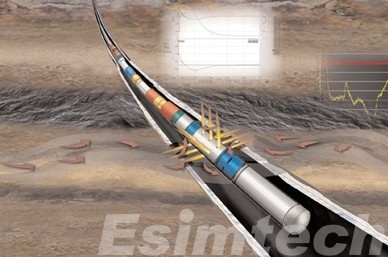
The Importance of Well Completion
The importance of well completion cannot be overstated. It’s essentially the bridge between successfully drilling a well and actually extracting valuable resources like oil, gas, or water. It’s a series of crucial steps taken after drilling and casing to prepare the well for efficient and safe production. Here’s why well completion matters:
Optimizing Production
- Maximizing flow: Well completion involves choosing the right equipment and techniques to allow hydrocarbons or water to flow freely from the reservoir into the wellbore and ultimately to the surface. This includes perforating the casing to access the reservoir, installing tubing and pumps, and controlling sand production.
- Targeting specific zones: Completion techniques can isolate different productive zones within the reservoir, allowing operators to target specific layers and maximize extraction from the most valuable sections.
- Enhanced recovery: Advanced completion methods like horizontal drilling and hydraulic fracturing can unlock previously inaccessible reserves and boost overall production.
Ensuring Safety and Well Integrity
- Preventing blowouts: Proper completion ensures wellbore stability and prevents uncontrolled releases of fluids or gases, safeguarding personnel and the environment.
- Corrosion protection: Completion materials and techniques are chosen to withstand the harsh conditions downhole, minimizing corrosion and equipment failure.
- Monitoring and control: Completion equipment includes sensors and valves that allow operators to monitor well performance, adjust production rates, and intervene if necessary, maintaining control and preventing accidents.
Environmental Considerations
- Minimizing waste: Efficient well completion reduces the need for future interventions and workovers, minimizing waste generation and environmental impact.
- Protecting groundwater: Proper casing and cementing techniques prevent contamination of freshwater aquifers by hydrocarbons or gases produced from deeper formations.
Economic Efficiency
- Reduced operating costs: A well-designed completion minimizes downtime, enhances production rates, and extends the life of the well, leading to significant cost savings in the long run.
- Maximizing resource recovery: Efficient completion ensures optimal extraction of resources from the reservoir, maximizing the return on investment and minimizing the need for additional drilling.
Overall, well completion plays a critical role in the entire oil and gas production process. It’s a complex and crucial phase that requires careful planning, expert execution, and the right technologies to ensure safe, efficient, and environmentally responsible extraction of valuable resources.
The Well Completion Process
The well completion process is a crucial phase in the life cycle of an oil or gas well, representing the transition from drilling to production. This intricate process involves a series of steps and technologies designed to prepare the wellbore for efficient hydrocarbon extraction. Here is an overview of the key stages in the well completion process.
1. Casing
Casing is the first step in the well completion process, providing structural reinforcement and preventing fluid migration within oil and gas wells. Typically made of durable steel or alloys, casing is installed in sections and anchored in place through cementing. This protective barrier not only ensures the stability of the wellbore against geological pressures but also safeguards surrounding formations from contamination. Casing, including surface, intermediate, and production strings, contributes to the overall well integrity, creating a secure conduit for hydrocarbon extraction. Regular integrity testing and inspection are vital to guarantee the continued effectiveness of the casing in maintaining a safe and productive well.
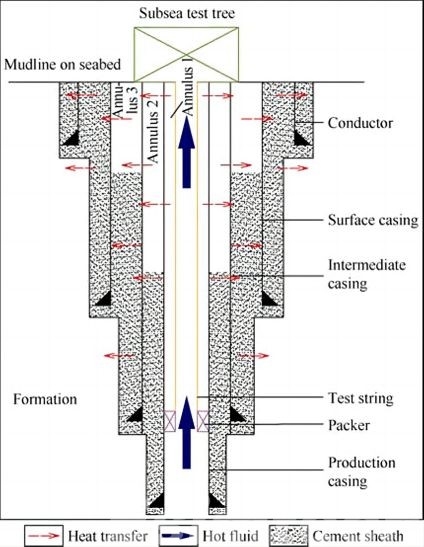
2. Cementing
Cementing in well completion is a crucial process that ensures the integrity and stability of the wellbore. After the installation of casing, cement is pumped into the annular space between the casing and the wellbore wall. This cementing operation serves to anchor the casing in place, providing structural support, and preventing fluid migration between geological formations. As the cement sets, it forms a durable barrier, enhancing wellbore stability and safeguarding against environmental contamination. Cementing is a vital step in the well completion process, contributing significantly to the overall success and safety of oil and gas wells.
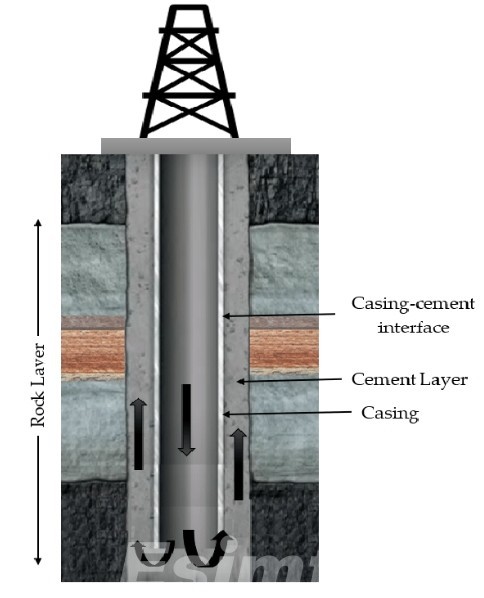
3. Open-Hole Completions
Open-hole completions in well engineering involve finalizing a well without the installation of casing in specific sections of the wellbore. In this approach, the reservoir rock itself serves as the structural support for the well. Open-hole completions provide direct contact between the wellbore and the surrounding formation, allowing for a more natural flow of hydrocarbons into the well. While this technique offers advantages such as cost-effectiveness and increased reservoir access, it requires meticulous planning and precise execution to mitigate potential challenges associated with well stability and fluid control in various geological conditions.
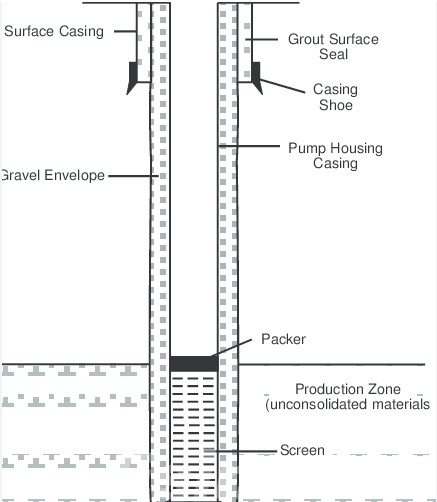
4. Perforating
Perforating involves the creation of openings in the well casing to establish a direct connection between the reservoir and the wellbore. Using specialized tools called perforation guns, holes are strategically made through the casing and into surrounding rock formations. This process enables the efficient flow of reservoir fluids into the wellbore, allowing for the extraction of hydrocarbons. Perforating is a carefully orchestrated procedure that ensures optimal connectivity between the well and the reservoir, ultimately enhancing the well’s productivity and paving the way for successful oil and gas production.
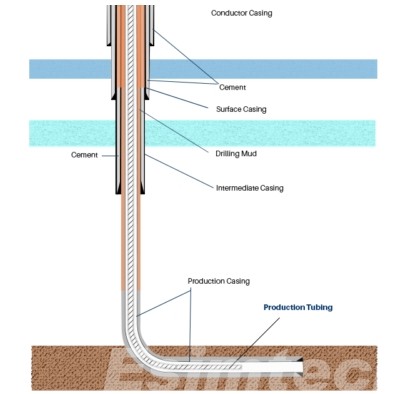
5. Gravel Pack
Gravel packing is a well completion technique designed to enhance the productivity and longevity of oil or gas wells, particularly those in unconsolidated or loosely packed formations. During this process, a specialized mixture of sand and gravel, known as the “gravel pack,” is injected into the wellbore around the production casing. This creates a permeable barrier that helps prevent sand and formation particles from entering the well, ensuring a more stable and efficient flow of hydrocarbons. Gravel packing is instrumental in mitigating sand production issues, maintaining reservoir integrity, and optimizing overall well performance in challenging geological environments.
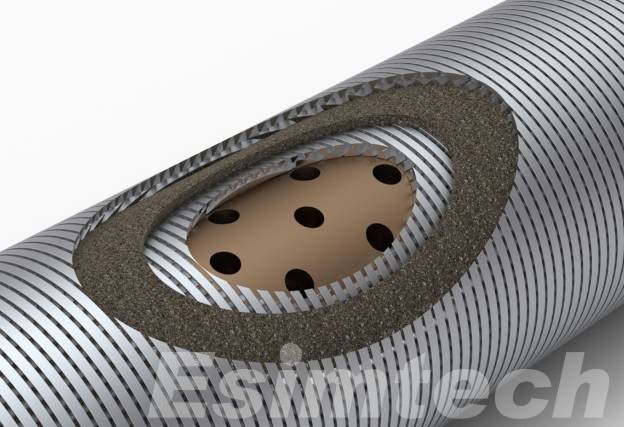
6. Production Tree
The final step in well completion involves the installation of the wellhead at the surface. Often referred to as a production tree or Christmas tree, this device includes casing heads and a tubing head, providing surface control of the well’s subsurface conditions. Production trees are utilized in both onshore and offshore wells, categorized into dry and wet trees. Dry trees are placed on the deck of a platform above the water’s surface, connecting to the well beneath the water, while wet trees are submerged on the seabed, encased in a protective steel box. Wells with multiple reservoir levels may employ double-wing trees for separate completions. Modern completions incorporate down-hole sensors, known as smart wells, to measure flow properties and optimize production rates.
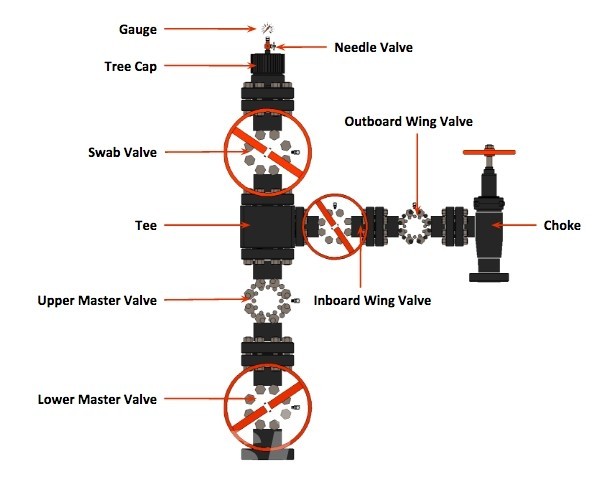
Different Types of Well Completions
Well completions come in various types, each tailored to specific geological conditions, production goals, and reservoir characteristics. The choice of completion type significantly impacts the well’s performance and efficiency. Here are two primary types of well completions:
1. Open Hole Completion
Overview: In open hole completion, the well is left without casing in certain sections, allowing direct contact between the wellbore and the surrounding rock formations.
Application: Commonly used in formations where the rock is stable and there is minimal risk of collapse.
Advantages:
- Enhanced reservoir access for fluid flow.
- Simplifies well construction compared to cased hole completions.
- Cost-effective in stable geological formations.
2. Cased Hole Completion
Overview: Cased hole completion involves installing casing throughout the entire wellbore, isolating different geological zones to prevent fluid migration and well instability.
Application: Suitable for wells with complex geological formations, high-pressure zones, or where stability is a concern.
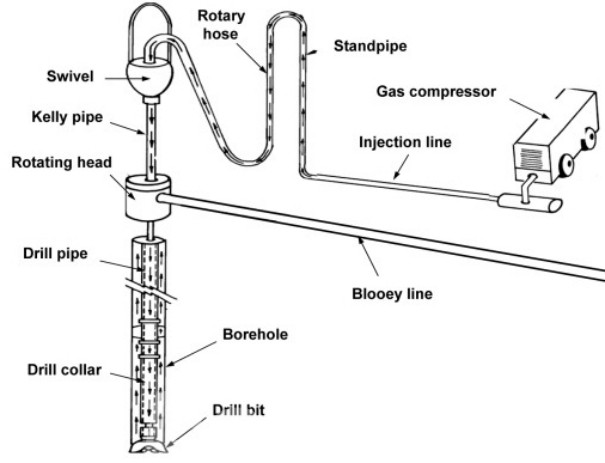
Advantages:
- Provides wellbore stability and prevents collapse.
- Enables zonal isolation for multiple reservoirs.
- Mitigates environmental and safety risks.
These basic types of well completions can be further customized based on specific well conditions and production objectives. For instance, variations may include selective completions that target specific reservoir zones, multilateral completions that access multiple branches from a single wellbore, and intelligent completions that incorporate downhole sensors and control systems to optimize production. The choice of well completion type depends on factors such as reservoir characteristics, wellbore stability, and the desired production strategy.
Conclusion
In conclusion, a well-executed completion process is fundamental to the success, safety, and sustainability of oil and gas wells. By recognizing the importance of well-completion, understanding the intricacies of the process, and choosing appropriate completion types based on geological conditions, industry professionals can contribute to efficient and responsible energy extraction. A continuous focus on innovation and adherence to evolving industry standards ensures that well completions remain a cornerstone for successful drilling operations worldwide.
